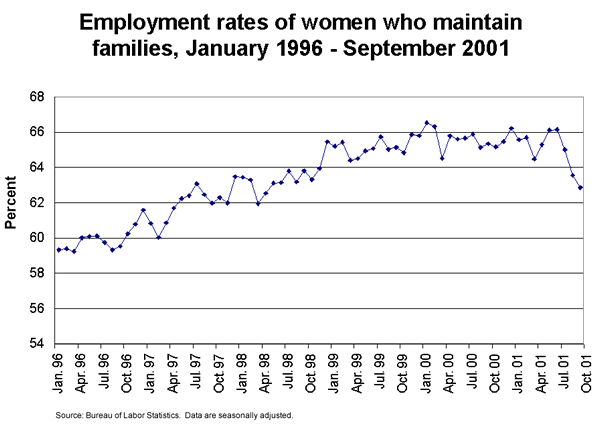A weekly presentation of downloadable charts and short analyses designed to graphically illustrate important economic issues. Updated every Wednesday.
Snapshot for October 10, 2001.
Will welfare reform weather the storm?
It is commonly believed that increased demand for low-wage labor was integral to the perceived success of welfare reform. The most dramatic evidence of this claim is the historically unprecedented increase in the employment rates of low-income single mothers over the latter 1990s. The employment rate — that is, the share of a given population employed in the paid labor market — is considered a reliable indicator of labor demand, even more so than the unemployment rate, which fails to reflect when job seekers give up looking for work and simply leave the labor market. In such cases, the employment rate falls.
Monthly data is unavailable on the employment rates of certain specific group (e.g., low-income single mothers). But the Bureau of Labor Statistics does publish monthly employment rates for “women who maintain families,” most of whom are single parents (at all income levels). The chart below shows that, after initially climbing consistently after welfare laws were changed in 1996, these rates have begun to decline steeply over the past few months as the economy has slowed. This is one of the first signs that, as the economy enters a recession, the labor demand for single moms that helped to prop up welfare reform appears to be fading.

This week’s Snapshot by EPI economist Jared Bernstein.
Check out the archive for past Economic Snapshots.
